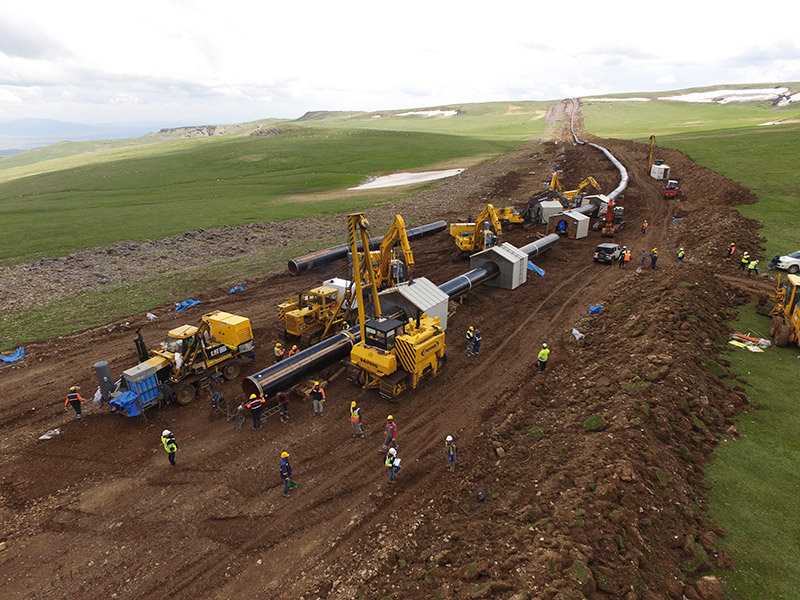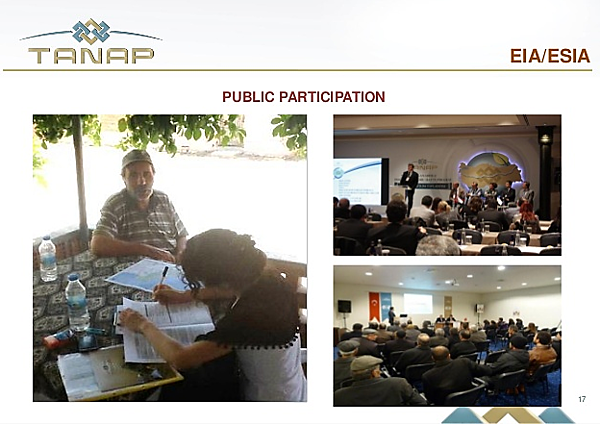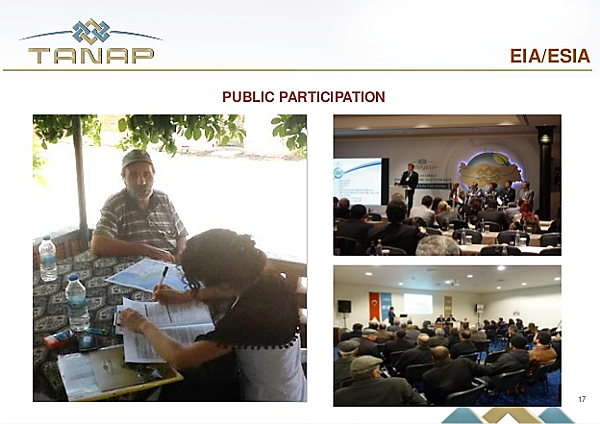What Many Large Infrastructure Projects Fail to Do?
Infrastructure projects represent a significant portion of the energy and the construction industries. Highways, pipelines, and tunnels are good examples of this type of projects.
In this post, we talk about primary challenges in community consultation in the extra-large size infrastructure projects, which involves a vast number of participants, having significant social and economic impacts, extensive works, and broad geographic coverage. We also provide some tips on how to overcome these issues to achieve successful stakeholder engagement outcomes.


An example of a mega infrastructure project: TANAP – 1850km natural gas pipeline. Photo credit: TANAP
Community Consultation Challenges
There are certainly many challenges in managing an engagement program for mega infrastructure projects. Here are five main stumbling blocks that we see many of them projects face:
- Undertaking community consultation stretching over a large geographic area – The affected communities often differ in their way of life, their cultural norms, communication preferences, and vulnerability to change. Decision makers and influencers can have different levels and types of priorities, influences, and interests. This is especially evident in projects that traverse borders where the rules are different, and there may be competing interests in the project at a high level. This is where “one size fits all” approach often fails, as it does not acknowledge the differences in the community characters and needs and their decision-making processes.
- Keeping up with the forever-changing construction schedule – Good engagement requires continuous and regular consultation with the affected communities during planning, throughout the construction and into operation. For a project with many (fast) moving pieces and work is often rescheduled at short notice, it is an enormous task to ensure affected people are notified and consulted before the work occurs. We have seen some mega projects being criticised for their ‘parachute consultation’ style where the company staff showed up in the community only when they wanted something, or when the construction was already happening in the area.
- Addressing stakeholder grievances promptly, especially on time-sensitive issues – For the affected communities and stakeholder groups with interests in the natural environment, the construction phase is the time of great concern. This phase carries the highest risks of potential negative impacts and therefore tends to generate the highest volume of grievances. Because the construction work is often fast-moving and involves lots of workers and material, any issues that result in construction delay can cost a company dearly. It is extremely important to provide rapid and effective responses to grievances to minimise any project delays while continuing to build relationships and trust.
- Managing risks to stakeholder relations from contractors – If responsibility for the implementation of any environmental and social impact mitigation measures is assigned to contractors, there are risks of the contractors failing to deliver thus undermining relations between the company and the local community.
- Dealing with resources constraint – Last but not least, running a stakeholder engagement program and addressing all the challenges discussed above with insufficient resources and/or capabilities can be the greatest barrier to achieving engagement goals. Resource constraint seems to be a standard issue for stakeholder engagement across a range of sectors. And the most common reason seems to be the lack of understanding from management about how good stakeholder engagement can contribute significantly to successful project outcomes.
Critical Success Factors
The complex and uncertain nature of these projects requires an effective and disciplined stakeholder engagement approach to accommodate conflicting stakeholder interests, address the challenges discussed above, to achieve optimum project outcomes. Some critical success factors for community consultation in mega infrastructure projects include, but not limited to, the following:
- Comprehensive and systematic identification of stakeholders and their interests
- A robust engagement plan that provides clear objectives, strategies, and expected (measurable) outcomes for each stage of the project development, and for each component of the project (i.e., sections of the pipeline)
- A stakeholder prioritisation roadmap is essential when dealing with a large number of stakeholders with different types and levels (and often conflicting) interest
- Prompt communication, especially in dealing with a large volume of stakeholder enquiries at the peak of construction
- A well-functioning mechanism to redress grievances. A good complaint handling procedure that is perceived as fair, transparent, and effective is important for projects with anticipated adverse social and environmental impacts.
- Aim for rapid response times in resolving grievances.
- Have community liaison staff on the ground as much as possible, and as accessible as possible, especially during construction, to provide updates, answer questions, and address issues promptly.
- Assess the risks of the contractor failing to deliver on impact mitigation measures. If risks are identified, and/or the capacity of the contractor is found lacking, the company should oversee the implementation, monitoring and follow-up on these commitments.
- An effective system to help manage the stakeholder engagement program, capture and analyse stakeholder feedback to enable informed decisions on project designs and impact mitigation measures. A well-functioning system, together with protocols and procedures in place to aid the engagement program help save time, reduce costs, and increase the success rate of the overall project’s social performance.
Case Study – TANAP
The case study below demonstrates how a company can manage stakeholders, their feedback, enquiries and grievances effectively for a mega infrastructure project through the use of a stakeholder management system.
The Trans-Anatolian natural gas pipeline (TANAP) is a 1850km pipeline runs from the Turkish border with Georgia traversing 20 provinces across the country and ends at the Greek border in the İpsala district of Edirne.
A comprehensive public consultation and disclosure program has been undertaken for the project since 2013. The engagement process for the Environmental and Social Impact Assessment (ESIA) received feedback from over 4,000 stakeholders across the pipeline route. TANAP has been using Darzin software to document the engagement activities, analyse stakeholder feedback, create reports to inform project decisions and demonstrate compliance with the World Bank lending conditions.


TANAP EIA Consultation. Photo credit: TANAP


TANAP EIA Consultation. Photo credit: TANAP
TANAP entered the construction phase in 2015 with four construction contractors managing the development of different sections of the pipeline. TANAP established Darzin licenses for all the construction contractors to share existing stakeholder information captured in Darzin to date, and ensure stakeholder engagement KPIs are met across the board. Darzin is also used by TANAP and their construction contractors to manage grievances related to the pipeline construction and land acquisition.
Recently we spoke with Zeynep DÖNMEZ, TANAP’s Social Impact Specialist, who is Darzin custodian in TANAP. We asked her to share her thoughts and experiences on how the teams have been managing the community consultation program and grievances to meet the regulator and lender’s requirements.
To read the interview with Zeynep, please download the full case study.

